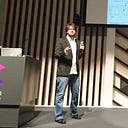Malnutrition in Sahel seen from the lens of data
It is estimated that there are 16 million children suffering from malnutrition world-wide. They are more exposed to diseases communication and also are more vulnerable to external conditions. In this century, still, 2 million children die because of malnutrition every year. Nutrition state can be estimated as a function of the diet and health, therefore, it depends on the food security that may greatly vary among regions in developing countries. Food security can be affected by shocks, socio-economic crisis, market prices and disease outbreaks that have an impact in mobility and accessibility to services. How can we help to prevent from malnutrition and their terrible effects? Data offers an opportunity to monitor food security and malnutrition and understand their factors, so humanitarian actors can fight them better.
Last June 3rd a team from researchers from Technical University of Madrid and Life D Lab participated in the challenge Call of Data in La Nave Madrid. We had the opportunity to work with survey data provided by Acción Contra el Hambre and other available open data sources. Previous work revealed how mobility reports about seasonal mobility and have a strong relationship with agricultural calendars. The migratory flows are that large that affect the markets and produce large population distribution changes that have an impact in food security and vulnerability.
We developed a framework to understand the impact of external factors into the food security and malnutrition. Many statistics are provide either at national level or in administrative regions and are difficult to interpret in terms of vulnerable groups, we focus on the livelihoods. Livelihoods characterize the means of living and production of regions in developing countries. Each livelihood can be considered as a complex system with its own characteristics and dynamics. The relationship between livelihoods establishes the frame for the national economy and development
Nutrition and health household surveys (SMART and SQUEAC /SLEAC) were used to estimate the level of nutrition and accessibility to services. We use livelihoods spatial region to segment the surveys into groups finding out that malnutrition level is modulated along the year by the seasonal calendar and is affected by seasonal mobility as more vulnerable population is left unprotected during labour migration. We found that the body mass index increased at the end of the harvest (January-February), when more products are available at the market, and at the end of the livestock migration (April-May with the return from the south to the northern livelihoods) when meat and milk markets take place. Those landmarks are critical for the nutrition level through the year and also to detect years of high risk of malnutrition if the production and pasture are affected by climate conditions. We estimated the production and pasture quality using remote sensing data available as NDVI and biomass indexes. Anomalies in those indexes are the basis to predict higher risk of malnutrition.
Using the framework, we also discovered that the reasons for bad access to health services depends on the livelihood characteristics. For instance, the main reason in Niger for not attending health centers is the unawareness of malnutrition and administrative problems with admission. However, in livelihoods dominated by pastoralism which are the ones most affected by acute malnutrition, the distance to health resources is the major cause of non attendance. Poor delivery of health assistance is the other large cause in livelihoods of pastoralism.
Integrating both types of analysis, with big data and small (surveys) data, we foresee that it will be possible to predict malnutrition (due to scarce food or disease outbreaks) every year as well as allocating with high resolution the people that need humanitarian aid the most. With a long term vision, this systematic analysis could lead to policies that will change how people in livelihoods of high food insecurity would access public services.
Team:
Yolanda Torres (UPM)
Alvaro Arredondo (UPM)
Sonia Illanas (UPM) @SoniaIllanas
David Pastor Escuredo (UPM, LifeD Lab) @dpastoresc
